07 January, 2025
windows
A home bathed in light – this is the dream of most people planning their own place to live. However, we can't simply declare that we love the sun and want as much of it as possible. We need to manage it wisely for the sake of our health, well-being, and finances.
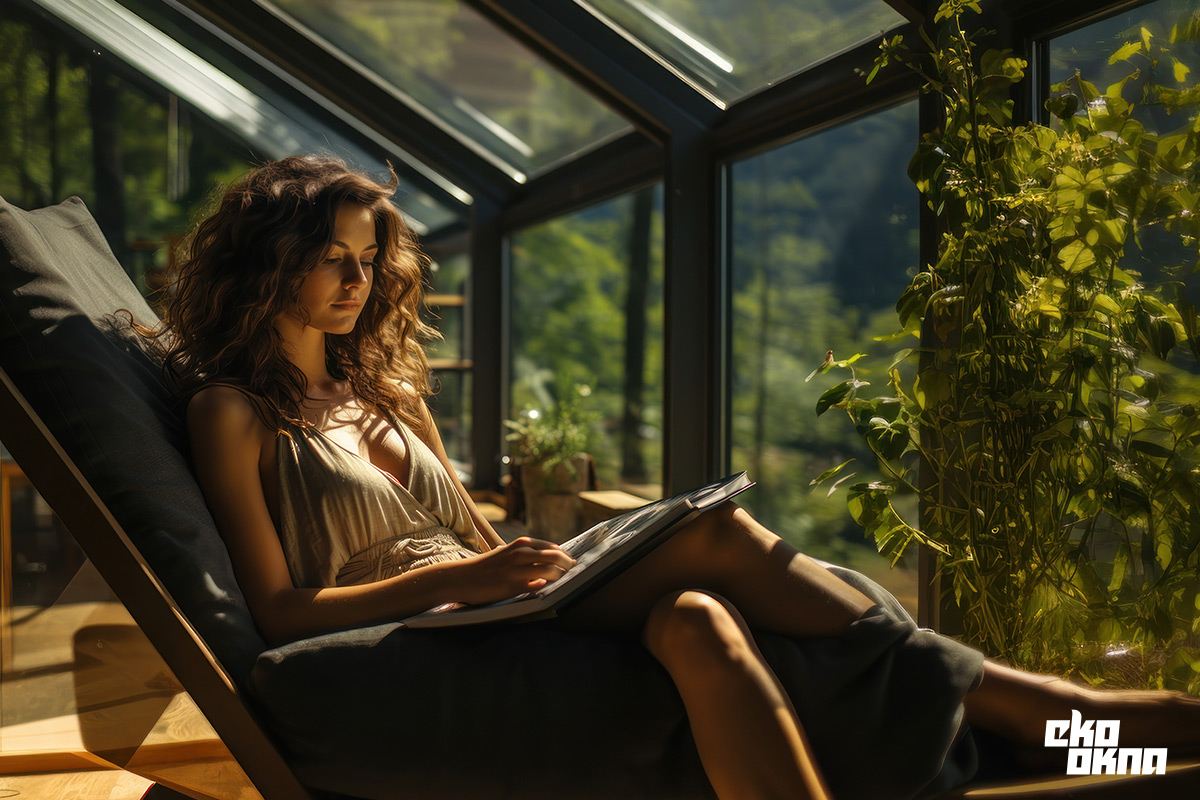
Natural sunlight is so commonplace that we usually don’t think about it at all. We rarely reflect on how photons, traveling at dizzying speeds, are delivered to us from the nearest star. These photons, with widely varying characteristics and properties, are born in the process of nuclear fusion that ignites the surface of an immense ball of gas to incredible temperatures. Instead, we simply enjoy "nice" weather when it’s sunny and complain when it’s "bad"—when the sun hides behind clouds.
Without diving into overly scientific details, it’s worth taking a closer look at how the sun shines. We know for certain that sunlight affects wrinkles and overall skin health, may influence the risk of cancer, and even plays a role in ensuring restful sleep.
Sunlight is not uniform. It is a stream of particles that reaches us in the form of waves. Why is this important? Because these waves can have vastly different lengths, which significantly changes their properties.
The shortest waves of interest to us, with the highest energy per photon, make up UV radiation—ultraviolet radiation. We can’t see it directly, but its indirect effects can be devastating, as we’ll discuss later in this article.
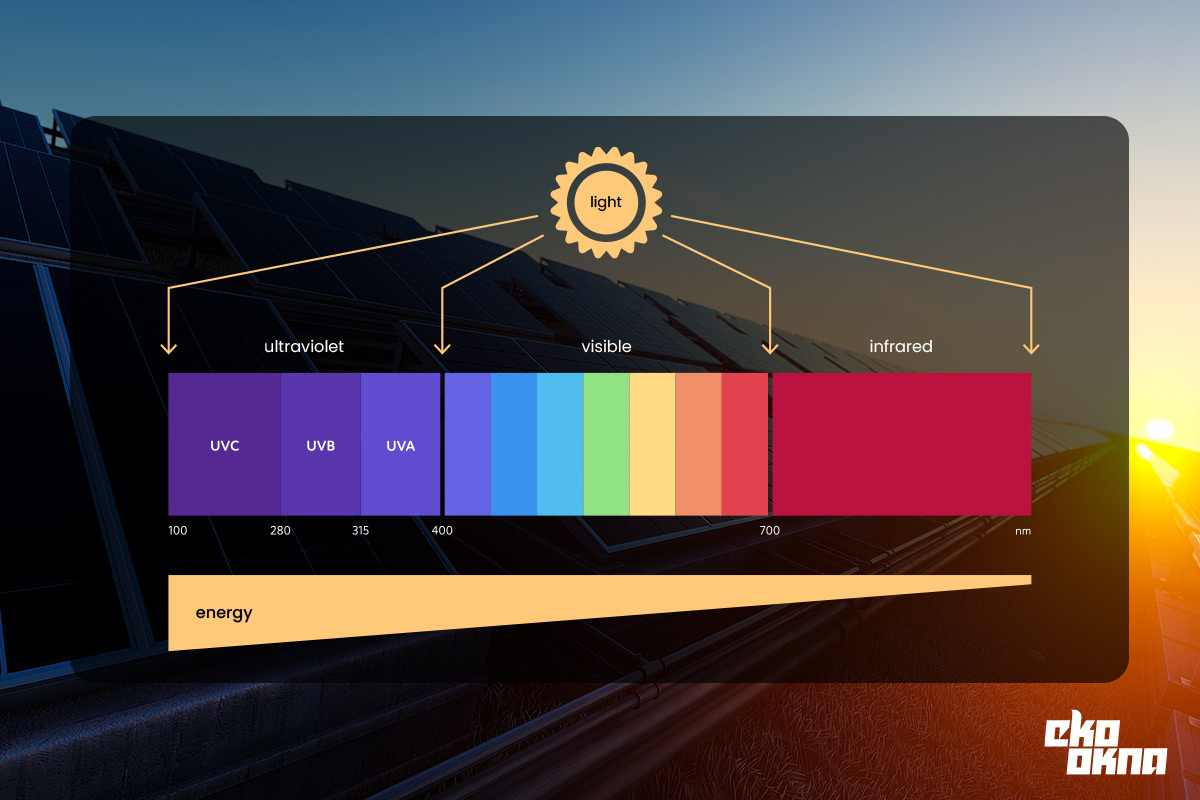
Infrared radiation, which consists of long waves with low energy per photon, is also invisible to the human eye. However, it is easily felt, as it carries the most heat. Infrared radiation is harnessed by devices like infrared heaters installed in bioclimatic pergolas. These allow you to bask in artificial sunlight on cool evenings, even in open spaces—something an ordinary heater can’t achieve.
We are most familiar with visible light. It is characterized by medium wavelengths and moderate energy. It combines traits of both IR and UV light, but thankfully, it’s relatively harmless. Most importantly, it is visible and responsible for the vibrant, colorful beauty of the world around us.
Electromagnetic radiation, which includes visible light, has a strong influence on our lives. Depending on its type and intensity, it can have a negative, positive, or neutral impact.
From a young age, we learn that sunlight directly acting on the skin produces vitamin D. This is a simplification but captures the essence of the phenomenon. Vitamin D is a versatile substance responsible for the proper structure of bones and also affects our well-being and immune system.
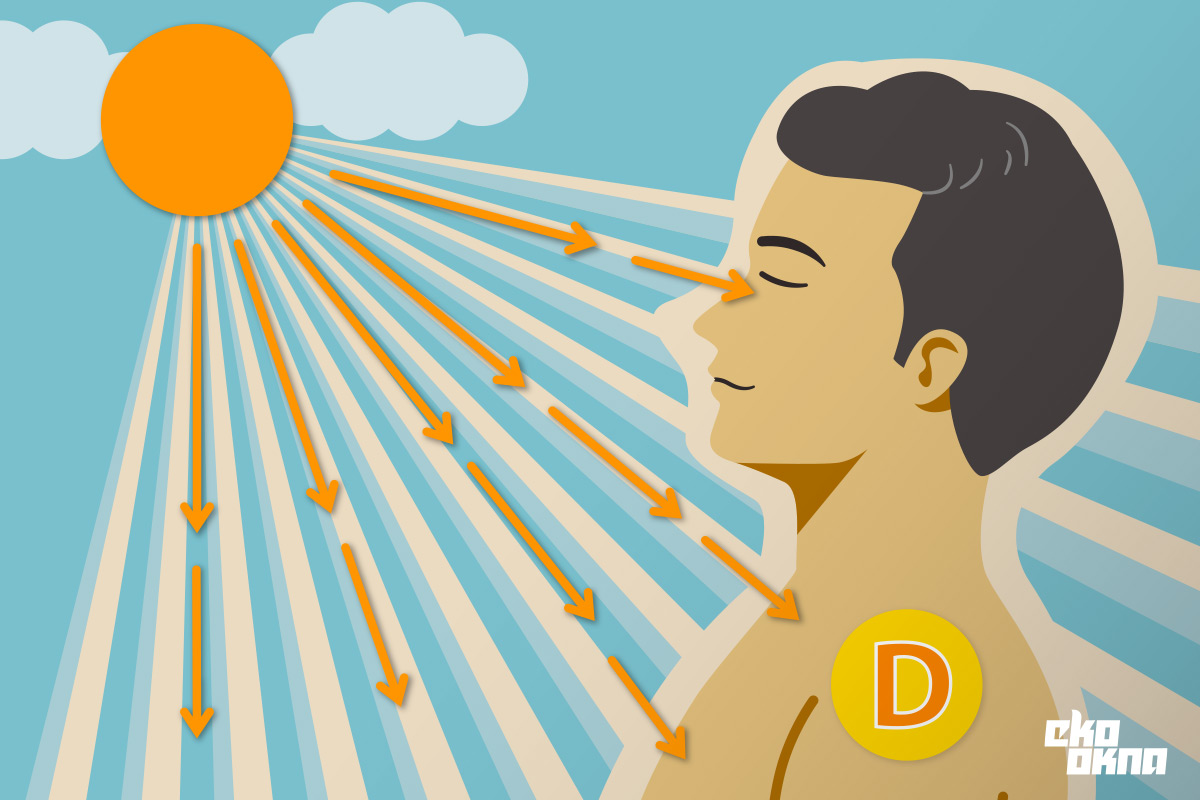
It is proposed that vitamin D deficiencies during the autumn and winter months, in addition to other factors, significantly contribute to the increased incidence of mild but bothersome conditions typical of this time, such as flu, tonsillitis, and the common cold.
A lack of sunlight producing vitamin D is also linked to seasonal affective disorder, or the "autumn blues," which causes feelings of reduced well-being, and even depressive episodes, after the end of summer.
The effect of sunlight radiation is generally seen as very positive in medicine. Regular exposure to sunlight promotes mental health, particularly through better sleep, as the sun helps regulate the circadian rhythm. Avoiding the sun, including working at night, leads to guaranteed sleep disorders.
The warmth carried by infrared radiation is increasingly used in medicine as a therapeutic factor. Sunlight therapy, including artificial sunlight in the form of lamps, is used to treat mechanical injuries, chronic pain, and mental health disorders. The sun, in particular, helps fight depression.
Ultraviolet radiation is highly controversial, and its perception is not uniform, but there is no doubt that it can be harmful. We need to distinguish three subtypes of UV radiation:
All types of UV radiation can be characterized as penetrating radiation, reaching deep into our bodies and potentially causing damage. However, UV radiation is also responsible for vitamin D production and tanning. Although tanning is currently desired for aesthetic reasons, it is actually a defense mechanism against sunburn. Melanin, the dark pigment in skin, absorbs UV radiation, protecting the surrounding tissues from its effects. Sunscreens that prevent sunburns and block UV radiation from reaching the skin also limit the production of tanning.
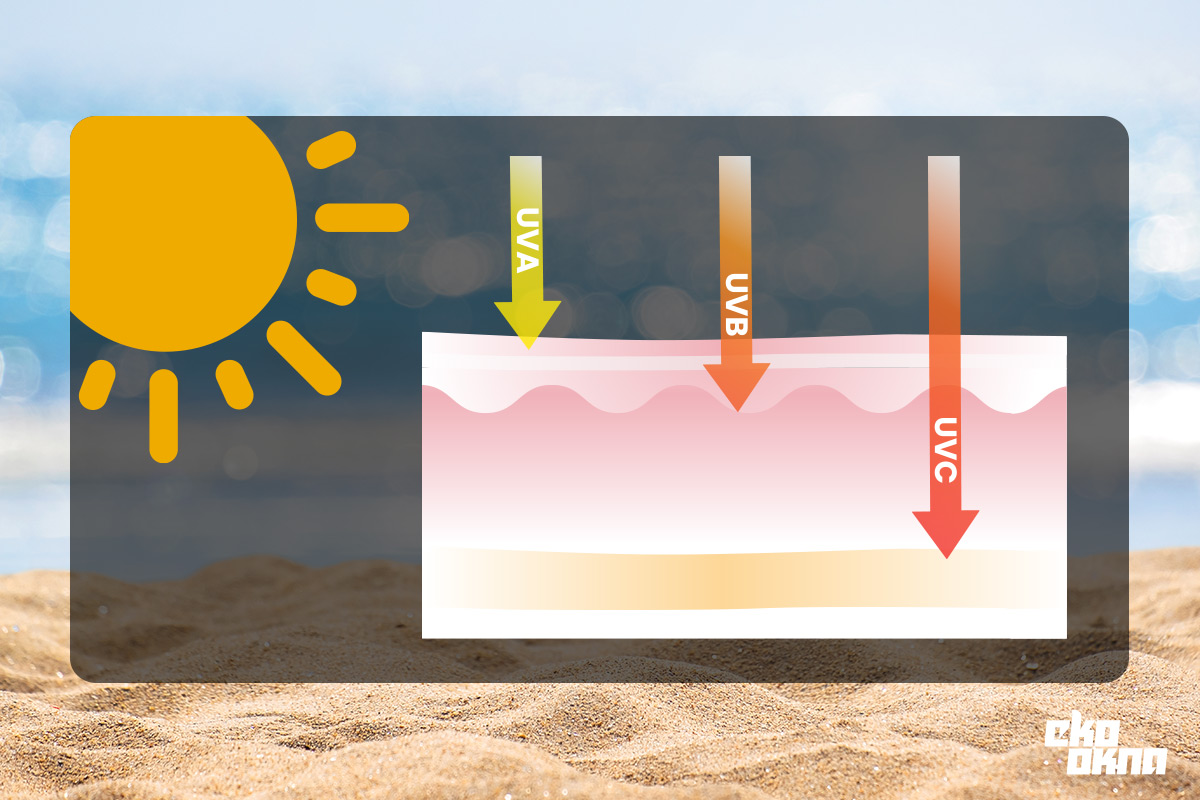
UVA radiation is the least penetrating of the three and affects only the outermost layers of the body. However, this doesn’t mean it is harmless. UVA radiation is partially responsible for photoaging of the skin. It also impacts the eye, contributing to the development of cataracts.
UVB radiation poses the highest risk of skin damage. The effects of this type of radiation are usually short-term, leading to sunburn. Its high penetration allows for vitamin D production but also causes damage to deeper layers of skin and delicate structures of the eye.
The harmful effects of UVB radiation include the potential for skin cancer. This is linked to the light reaching the inside of cells and breaking apart various structures. Skin cancer can be caused by direct damage to the cell’s DNA, but the formation of free radicals also presents a threat. Prolonged exposure to the sun requires consuming large amounts of antioxidants to combat this.
The most penetrating part of light, UVC radiation, is the most dangerous to our DNA. It is hard to defend against UVC radiation without using sunscreens, so the human body tends to repair the damage caused by UVC rather than prevent it. When these normally efficient repair mechanisms fail, melanoma can develop. People with pigmented skin changes should pay particularly close attention to their sun exposure.
Architecture is a way – a set of rules and principles – in which people create comfortable and functional spaces for work and leisure. It is meant to serve us well, and we should enjoy it through its aesthetics. Architecture is a response to natural conditions, a way of adapting them to our purposes. Light plays an important role here. Let’s look at it through two aspects:
Sounds complicated? Perhaps, but these are practical issues we face every day.
At the very beginning, we mentioned that we want our homes and commercial buildings bathed in light. That’s obvious. Our mental health suffers when we lack sunlight. On one hand, the sun damages the skin, but we also immediately feel the negative impact of staying under a roof for too long. Sunny days make us happy, while cloudy ones put us in a bad mood.
To invite the sun into our homes, we use many methods. These can be structural solutions, such as:
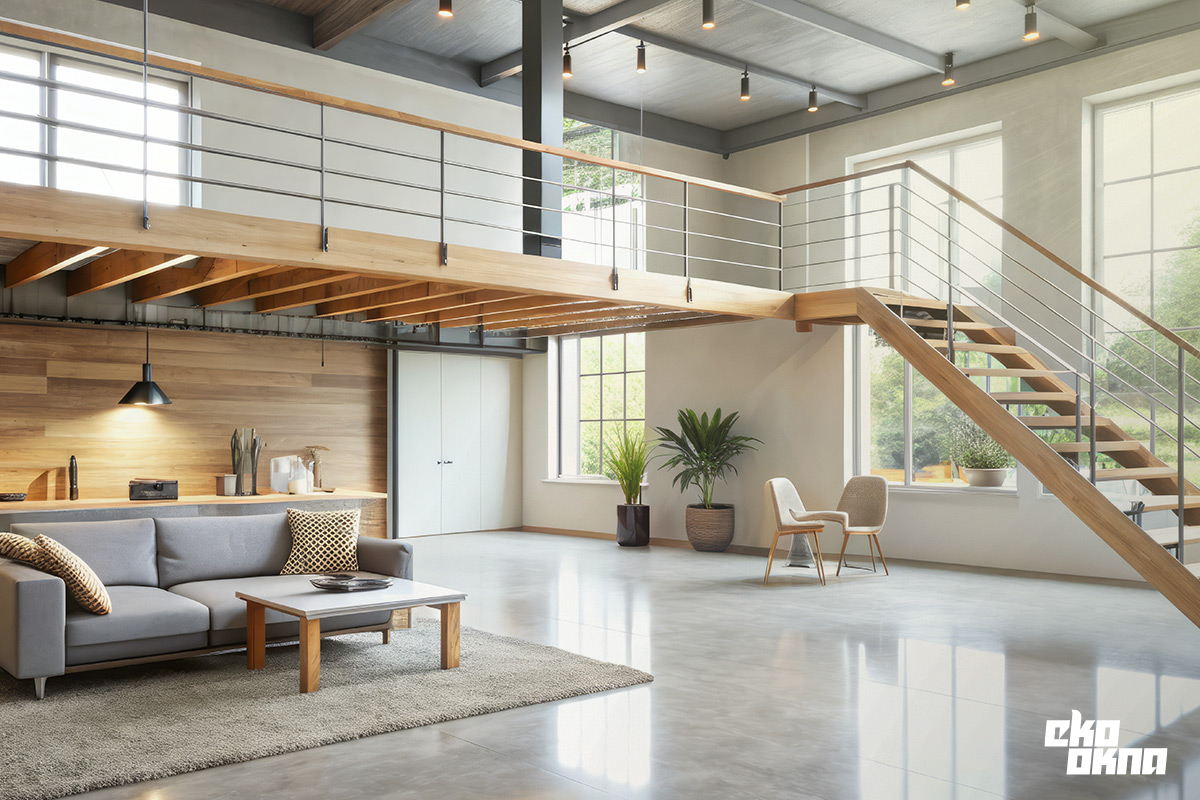
We choose materials that allow us to open up to light and diffuse it, such as:
We can also use designs specifically created for light, such as:
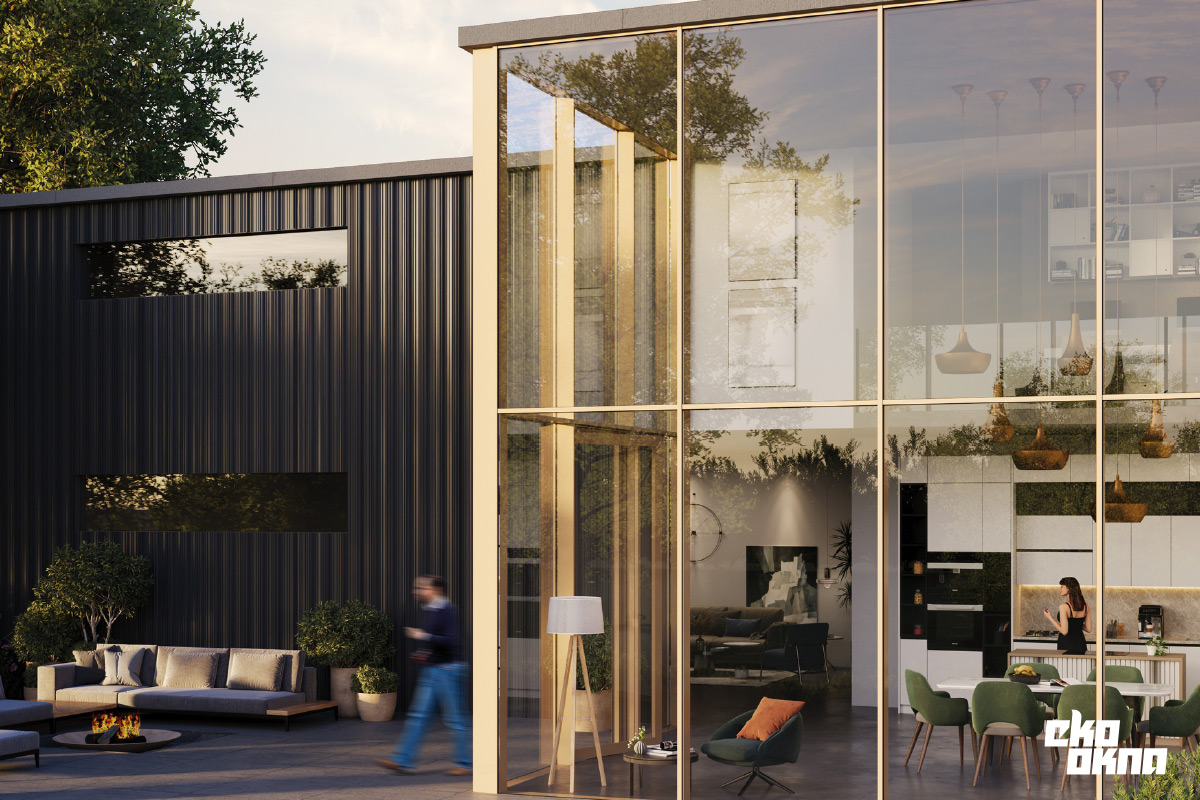
All of these solutions allow us to let more light into the interior and then diffuse it. Additionally, the light color palette and brightness give us a sense of larger space, which is especially important in small homes and apartments.
UV radiation is harmful to our tissues and can also be dangerous for building elements. Owners of older colored aluminum doors and windows know this well; after just a few years, they looked completely different in shaded and sun-exposed areas. The same was once true for PVC, which turned yellow after a short period of exposure to the sun.
Contemporary materials, especially high-end ones, are very resistant to UV radiation. A good example of this are the S8000 and S9000 windows with acrylcolor finishes, which not only do not fade noticeably over time, but also have surfaces that are durable against mechanical damage and can be easily polished in case of minor scratches. The intense color that can be enjoyed right after purchase will remain for years.
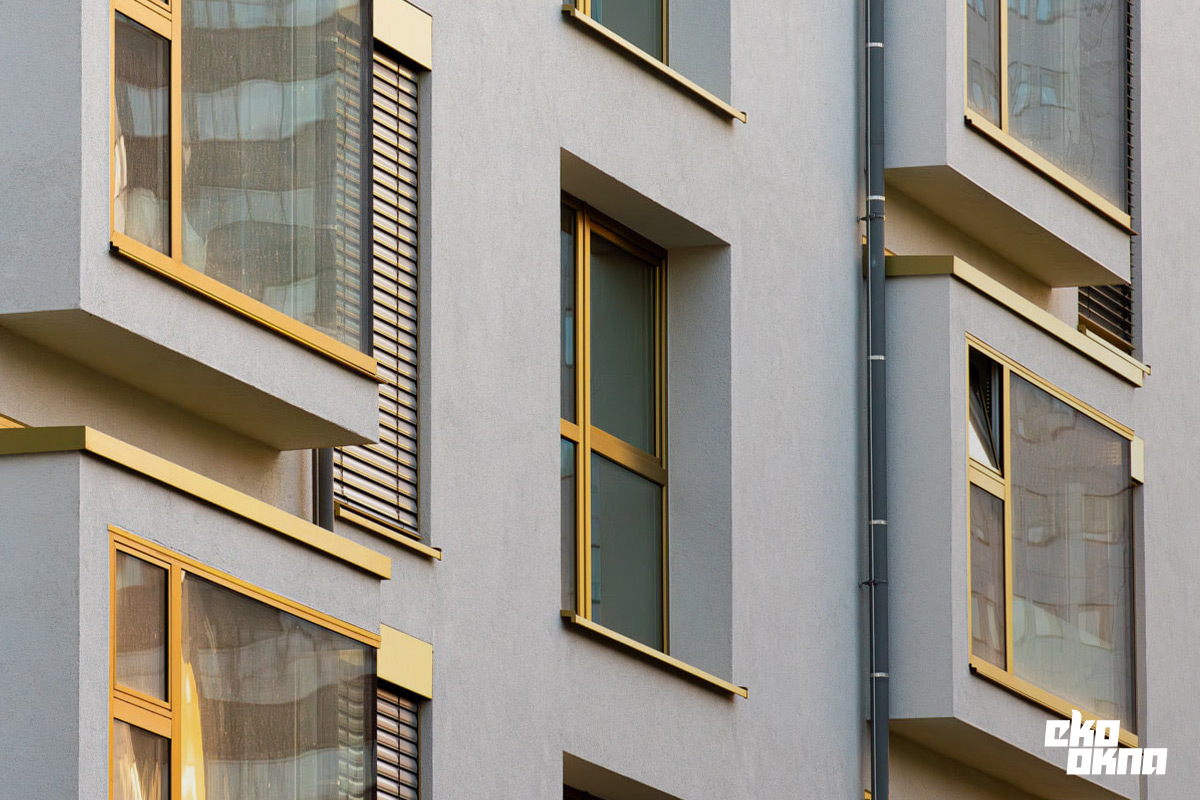
Photodegradation is not limited to just the exterior elements of the building. Sun rays falling on furniture near windows will damage them. The floor will suffer, and the color of carpets will fade.
These problems can be prevented by reducing the amount of light entering the interior. However, this requires more thoughtful consideration.
Sunlight affects our thermal comfort. In lofty terms, it is thanks to sunlight that life is possible on Earth, and in more practical terms – a sunny day means we don’t have to dress so warmly.
Light in our home is free energy that lowers heating bills, although utilizing it is not as simple as it may sometimes seem.
Centuries ago, the problem was just creating an opening in the wall for light to enter. Naturally, the challenge was to create an opening that would not cause the ceiling to collapse onto the floor too quickly. Over time, we’ve managed this so well that today we can build entire walls of glass. However, this doesn’t always solve the problem and sometimes even presents new challenges.
It turns out that if we don’t want our glazing to easily allow heat to escape from the building, it must consist of insulated glass units. These, in turn, can block visible light and thermal energy. These are two aspects of the same phenomenon, but as we discussed in the earlier part of the text, different wavelengths of light have different properties. In practice, it can turn out that a theoretically transparent window absorbs ⅔ of visible light and blocks up to ¾ of the energy that could heat the interior.
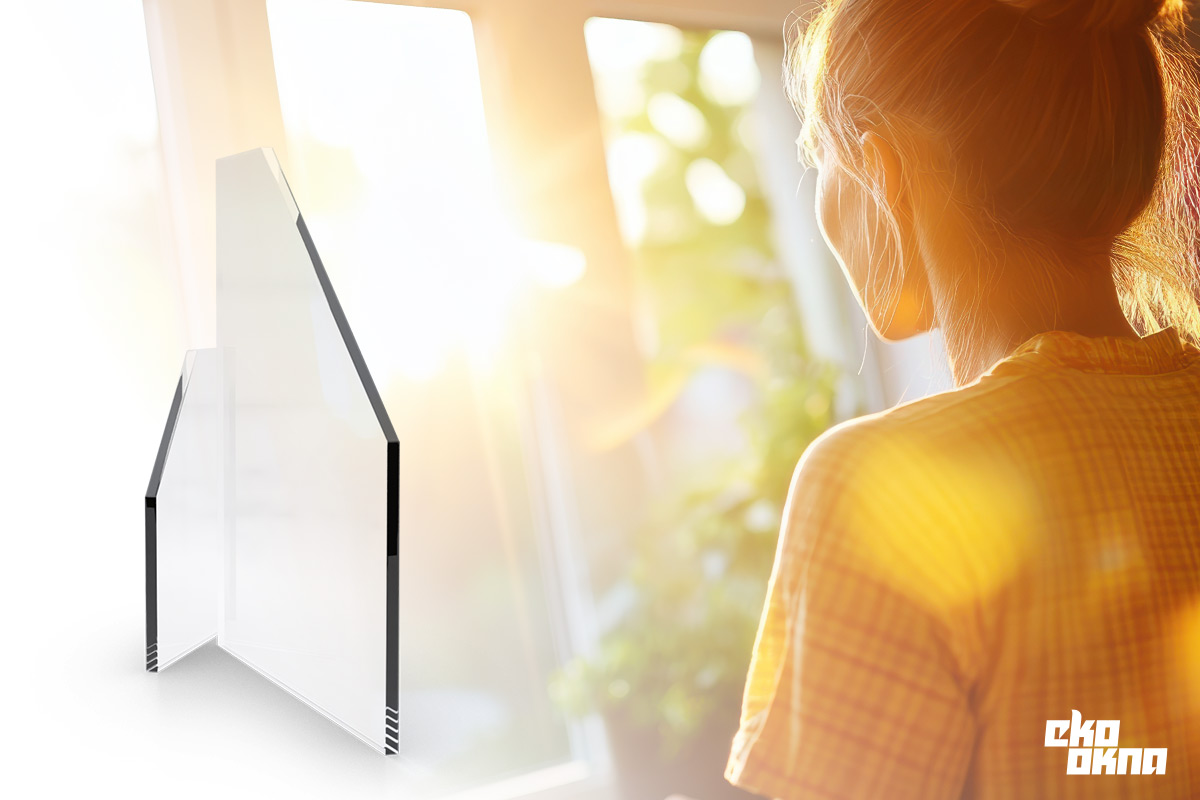
Two parameters of glazing are directly relevant in this matter:
If we want to take advantage of natural heating from the sun, we will want a high g value. If an entire wall covered with SlimWall 35-type glass is involved, we will want a low g so that air conditioners do not have to work constantly. Excessive solar exposure in the summer is a sure path to overheating rooms, which then need to be cooled down at the cost of large amounts of energy.
The desired Lt will refer to how friendly the windows should be to our eyesight. In many cases, these parameters are correlated, but there are many possible combinations that can ensure highly transparent windows effectively isolate us from the heat of the sun or allow us to take in as much of it as possible.
Natural sunlight is our enemy or ally depending on the circumstances. Treating skin diseases is impossible without it, but we must keep in mind that health and sun exposure is a vast topic in which other skin diseases can be triggered by the same sun that earlier helped to heal. On one hand, mental health without it is a fantasy, but on the other hand, the risk of skin cancers is directly proportional to the time spent in the sun (along with other factors).
Fortunately, the amount of light inside can be easily controlled by using window coverings.
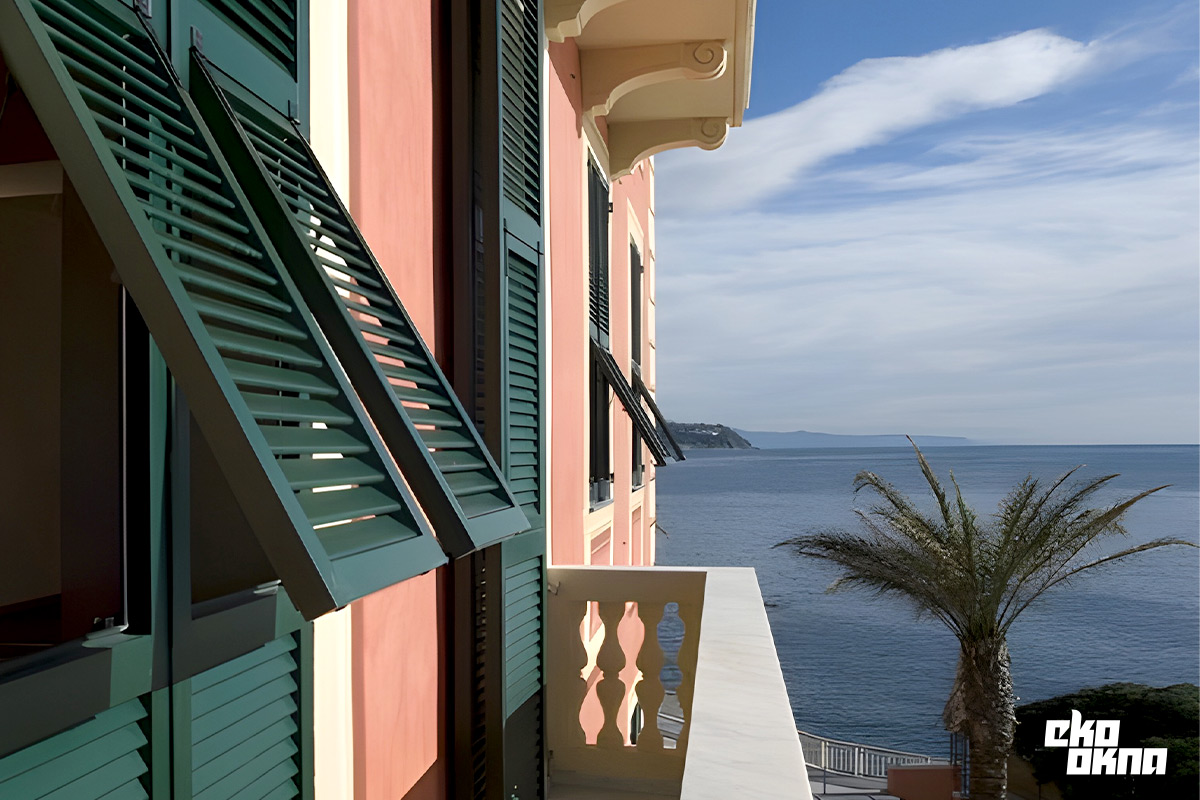
The options here are vast and can be categorized in many ways. The division that matters most to us distinguishes two categories:
The advantage of external shades is that they make it easier to completely darken the interior, and they can also stop heat from entering the building in the first place. Some options can also provide mechanical protection for windows, including anti-burglary protection. These include:
On the other hand, internal shades are very easy to install, often completely non-invasive, usually much cheaper, and complement interior decoration. They can also effectively darken rooms. Here we have:
Especially when combined with home automation systems, all of the above-mentioned shades, particularly external solutions, can effectively maintain the proper temperature inside. They will guarantee comfort without any effort on our part.
Unfortunately, this text cannot be summed up with a single convenient conclusion that would resolve everything. We must stick with the truism that everything is good in the right amounts, including sunlight.
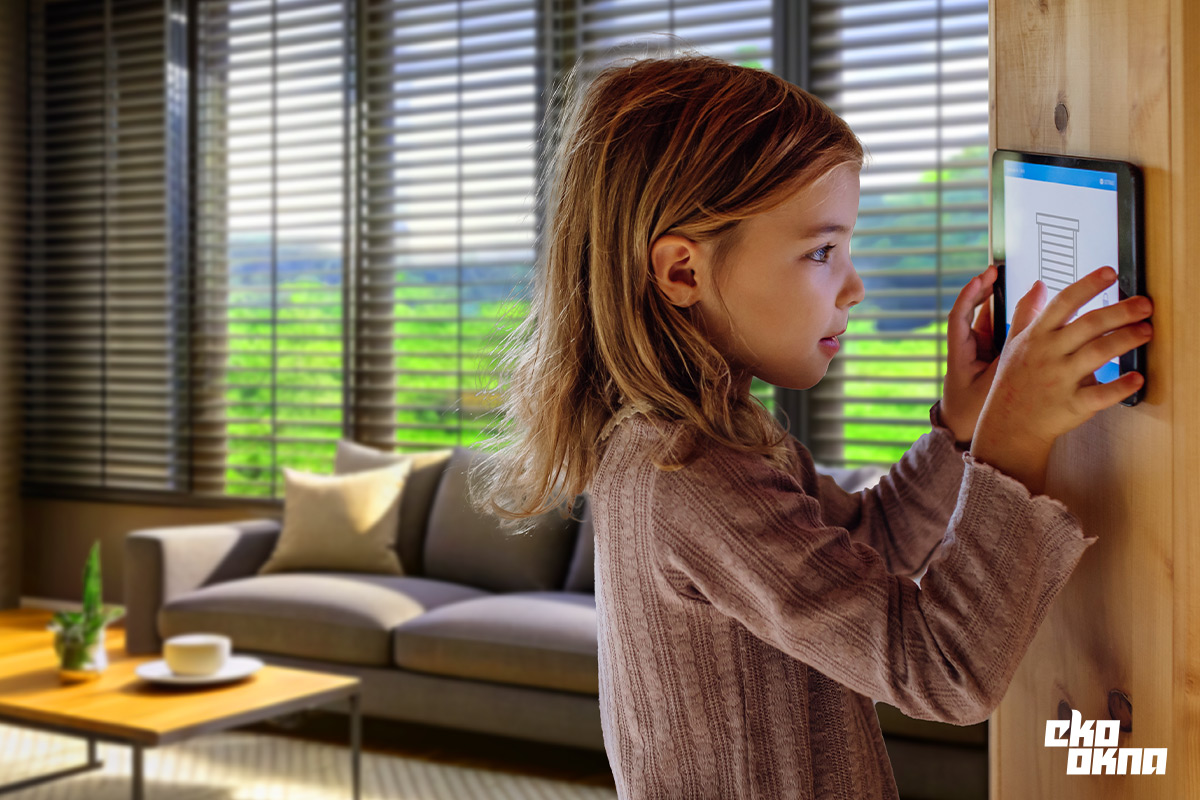
Yes, sunlight brings the risk of cancers, potential sunburns, and wrinkles, but it also provides healthy sleep and overall mental health. We call sunny days beautiful days for a reason. Our homes suffer from being bombarded by the sun, yet, on the other hand, it allows us to save on heating bills and provides thermal comfort. It’s also worth mentioning the significantly better characteristics of natural light for eyesight compared to artificial lighting.
Wise people are often said to be enlightened, so let us be enlightened and well-lit by natural light. Let’s take advantage of the sun and available window solutions to minimize the negative effects of our closest star and maximize what it does for us.

Hotline: +48 32 459 15 00 Contact for new business customers only. Connection fee in accordance with the operator`s price list.
E-mail: quoteuk@ekookna.com newclientuk@ekookna.com Contact for business customers only.
Eko-Okna S.A.
Kornice, ul. Spacerowa 4
47-480 Pietrowice Wielkie
NIP: 6391813241
KRS: 0000586067